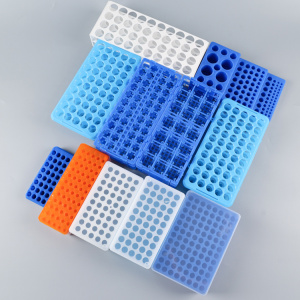How to choose the right culture plate to use?
How to use culture plates aseptically? The experimenter had a lot of questions during the operation, and today we will answer them one by one.
The cell culture plate also follows the principle of strict sterility when performing cell operations. All operations must be standardized and scientific, and will not cause additional effects on the growth of cells. One of the most common problems is how to ensure the uniformity of the cells after adding the sample and minimize the influence of the medium change on the cell growth state.
Q: The lids of 24 Well Plate,96 Well Plate Cell Culture and petri dishes are very loose, which is convenient for ventilation, but will bacteria, molds and other pollutants also slip in?

A:The lid is very loose and belongs to a semi-open culture. The purpose of this is to breathe (actually, to allow the CO2 outside the petri dish to be fully exchanged with the petri dish to maintain the pH of the medium).
Everything has advantages and disadvantages, which of course increases the possibility of pollution. This also evaporates the liquid in the petri dish, which is notable for precise dosing of drugs. Therefore, the following two measures are necessary a. The air in the incubator must be clean (regular ultraviolet light, alcohol scrubbing, and the incubator should be turned on and off as little as possible) b. The humidity in the incubator must always be kept at 100% (a water tank with sterile distilled water is placed in the incubator ).
Just like a petri dish, it is also a container with an upside-down lid and will not contaminate. It is mainly because of the negative air pressure generated by the "L"-shaped edge of the cover that microorganisms are attached to the dust, and the dust carried by the air flow cannot pass through the edge of the cover that generates the negative pressure. The ventilation effect is only through the diffusion of air, and no airflow will be generated, so it will only breathe and not penetrate bacteria.

Q:Using a 24 well plate, in some of the wells there are manipulations (inside the bench), while other wells have cells to grow. I'm worried about contamination this way, don't know what to watch out for
A:In the ultra-clean bench, if the operation is standardized, it should be possible. I think you can make full use of the cover of the culture plate, try to expose only the holes to be operated, and cover other holes with covers.
Consider it comprehensively before use, and make full use of all the holes; if you only need to use a few holes, you can use only one side, and cover the rest with a lid. I am used to using the right hole first (the right hand is convenient for adding samples).
When operating, use a few glass slides to raise one side of the board, do not fully open the lid, generally no problem.
Uneven distribution of cells and solutions
Q:When cells are seeded on a culture plate, cells always gather in the peripheral part, what should I do?
A:How are your cells mixed? Is it pipetting or shaking the plate? If it is the latter, and if it is shaken in a circle, it is very likely that due to the centrifugal force, the cells are thrown to the surrounding part, resulting in fewer cells in the middle and more around!
Here is a good way: before culturing the seed plate, put the culture plate into the incubator for a few hours of saturation and then take it out. When seeding the cells, the force should be light. Add slowly to allow the cell suspension to flow into the wells of the plate, and the cultured cells grow substantially uniformly. Remember to never shake the oscillator, or your cells will clump together like you said.
The smaller the hole diameter of the culture plate, the more obvious this phenomenon is. The phenomenon of 24- and 96-well plates is unavoidable, because the wall of the liquid makes the culture medium in the hole not a liquid level, but the periphery is high, just like a concave mirror, However, due to the need for intervention and other reasons, the use of these two kinds of well plates cannot add enough culture medium, so that the cells appear "edge aggregation" together with the culture medium. Depends on what kind of indicators you need to observe, if it is MTT, immunohistochemistry will affect the results due to cell layering.

When digesting cells, pay attention to pipetting evenly to avoid cell clumping, and the amount of culture medium in the wells should be sufficient. Generally, a sufficient amount of culture medium should be added during inoculation, and the medium should be changed once when intervention is added. , in this case, the phenomenon of "edge set" will be improved, so give it a try.
——



